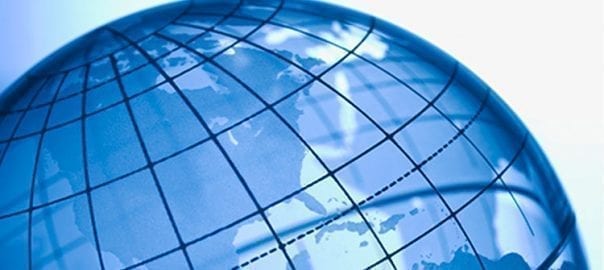As the world’s population and demand for food continues to sharply increase, a major looming question for policymakers, investors and communities is, “Where will increased food supply come from?” While additional food production will depend on various factors, including government policies, private sector investment and technology, one country that will likely play an increasingly important role in feeding the world is Russia.
Since 2000, Russia’s grain exports have rapidly grown and in 2017 Russia surpassed the United States to become the world’s largest exporter of wheat. In addition to its current agricultural production capabilities, climate change may make many millions of additional acres in northern Russia available for farming. This, combined with planned expansions of Russia’s export infrastructure, broadening export markets and a planned increase of fertilizer use, could increasingly place it in a position of global agriculture sector leadership.
This article provides a brief overview of the Russian agriculture sector, how it has been impacted by economic sanctions in the wake of Russia’s annexation of Crimea and its great potential going forward. In addition to having major world food supply significance, this will create significant opportunities for global agriculture sector investors.
A Snapshot of Russia’s Agriculture Sector
The largest country in the world, Russia has approximately 1,282,500 square kilometers of arable land. While the key drivers of Russia’s economy are oil and natural gas exports, the agriculture sector is also important and currently comprises approximately 4.7% of Russia’s GDP.
Russia’s most important crops are grains, sunflower oil and corn. It is one of the world’s top producers of wheat, the world’s largest producer of sunflower oil and an important producer of corn. In addition to grains and vegetable oils, Russia also produces and exports many other food products such as barley, fish, meat, dairy products, fruit and nuts.
Russian food products are exported around the world. Russian grains, for example, are exported to over 120 countries. The main export destinations for Russian grains are North Africa, the Middle East and the South Caucasas. The main export destinations for Russian sunflower oil are the CIS countries, China, Turkey, Egypt and Iran.
The Macroeconomic, Geopolitical and Climate Context
Since 2014 Russia’s agriculture sector has been impacted by a number of major macroeconomic and geopolitical events. The first event was the collapse of the price of petroleum, Russia’s most important export. Between 2014 and 2018 the price of oil fell from US $103 a barrel to a low of US $39 a barrel and the price is currently US $61 a barrel.
This has had several important consequences for Russia, including pushing the Russian economy into recession, causing a sharp fall in the value of the rouble and a causing a drop in Russia’s foreign currency reserves. The rouble’s devaluation caused the price of imports to sharply increase which in turn created strong upward inflationary pressure. In 2015, the inflation rate in Russia was over 15%, its highest level in a decade.
A geopolitical development that has had an important impact on Russia’s agriculture sector is the economic sanctions against Russia. Following Russia’s annexation of Crimea, various countries implemented several rounds of economic sanctions against Russia. In response to these sanctions, the Russian government banned food imports from several countries and areas, including the United States, Canada and the European Union. Following this, the structure of Russian consumer food consumption significantly changed. Between 2014 and 2018, the percentage of food consumption that was based on imports fell from approximately 37% to approximately 22%.
A third set of events, whose cause and significance still remain difficult to analyze precisely, are temperature increases and extreme weather events. What is clear is that due to several years of highly favorable weather conditions Russian grain production has sharply increased. In 2017 Russia become the largest exporter of wheat in the world, exporting nearly 28 million tons. It is expected that the 2017-2018 harvesting season will produce about 133 million tons of grains, of which approximately 45 million tons will be exported. It is expected that about 32 million tons of these exports will be comprised of wheat.
Agriculture Sector Potential and Obstacles
The Russian agriculture sector has massive potential going forward for several reasons, one of which is rising global temperatures that may melt snow currently covering massive areas of potential farmland. According to one report, global warming could create an additional 140 million arable acres of land in Russia. This, combined with an additional use of fertilizers and technological developments, could exponentially increase Russian agricultural production capability.
Additional production capacity has the ability to be matched with new markets. Vladimir Putin’s vision of a Greater Eurasian region and the possibility of great economic integration with China, a massive source of food demand, could significantly increase export market depth.
Russia faces, however, major challenges to building its agriculture sector. A major current challenge is its weakened economic condition due to low oil prices and the weak rouble. This has made it much more expensive to import needed agriculture machinery. Further, weakened central government finances have made it more difficult to support the agriculture sector with subsidies, a key component of Russia’s overall agriculture sector public policy.
Another major obstacle to Russian food export sector growth is infrastructure limitations. Russian traders have lost access to ports in the Ukraine, which has limited export capacities. Several upgrades to Russian ports and terminals are current being built or are planned, but it is unlikely that these improvements will have a major impact on grain export capabilities for at least a few years. One of these ports is a new grain facility that is planned to be built at the sea port of Zarubino, near the Russia-China border.
Russia’s great size also creates opportunities as well as challenges. While Russia is uniquely positioned to supply markets in Europe, Asia and the Middle East, due to its immense size and the fact that many places with great agriculture growth potential are in areas that are not highly populated, it will be a challenge to put in place, not only agricultural product storage and transport infrastructure, but also the communities required to support significant further agriculture sector development.
Investment Opportunities
The current and potential future economic and agriculture landscape in Russia creates many investment opportunities. These include:
-investing in farming companies that have production growth strategies
-investing in company or investment funds with agriculture-driven infrastructure strategies, including ports, roads and logistic centers
-investing in companies whose business models are based on agriculture sector inputs, including agriculture machinery, agriculture equipment and fertilizers
-investing in companies in the financial sector that can complement or increase existing agriculture sector financing sources
Conclusion
The already important Russian agriculture sector has the potential to grow significantly in the years to come. In addition to having major significance for global food supply, this will create many investment opportunities for global agriculture sector investors.
This article was written by Darin Bifani. The photo for this article was taken by Nitin Bhosale.
If you would like to discuss potential agriculture investment strategies in Russia or other parts of the world, please contact us!





